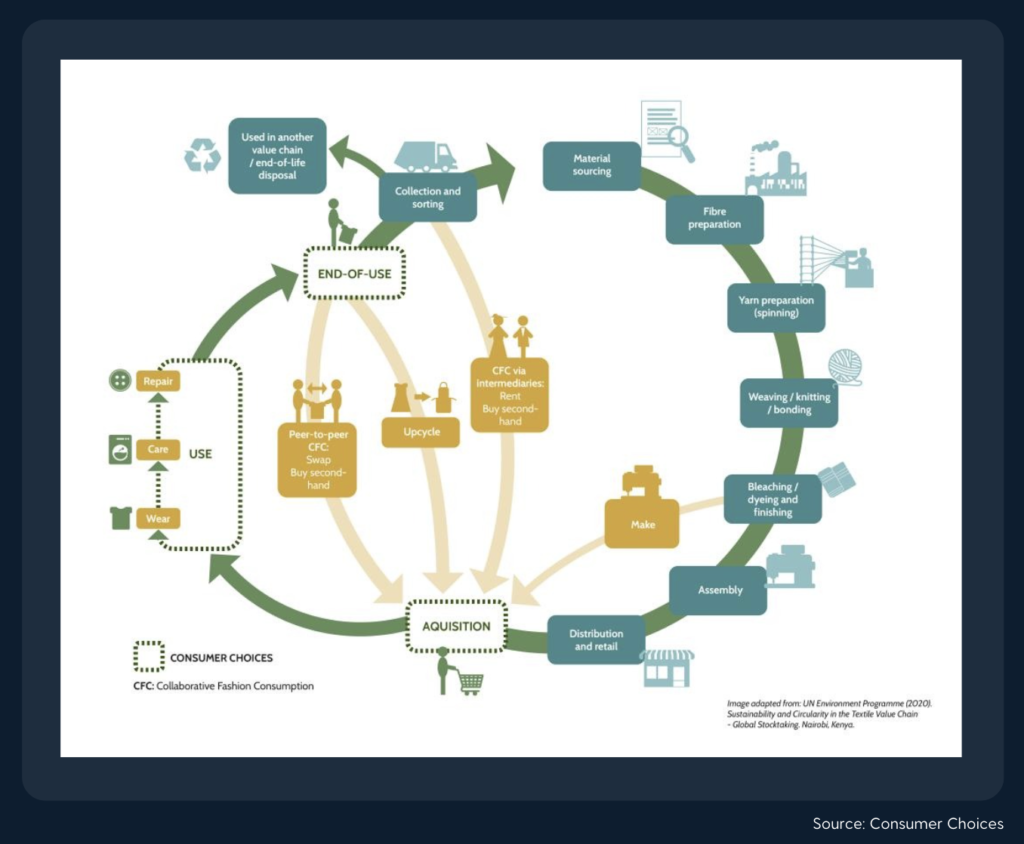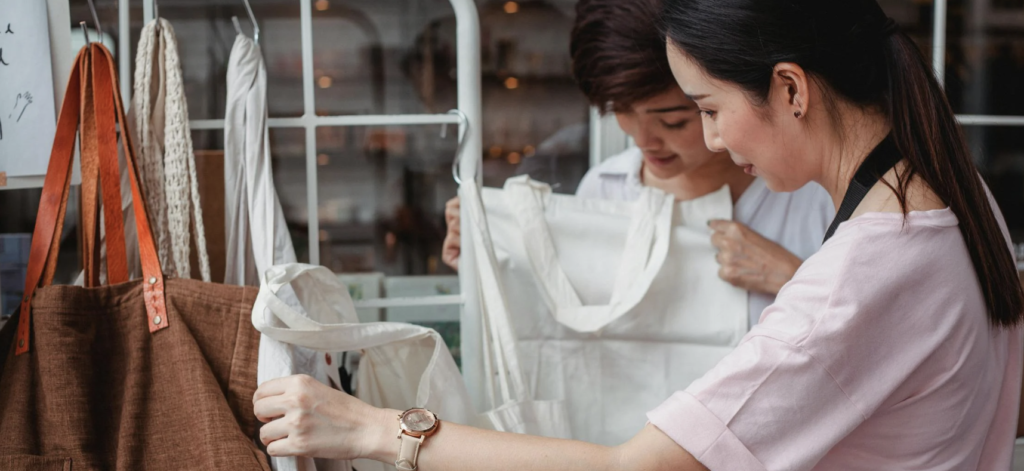
Threads of Change: Where Style Meets Sustainability
What is Sustainable Fashion?
Sustainable fashion is a broad term highlighting an approach to design, production, and consumption patterns of clothing that prioritize environmental and social concerns. You can analyze and adjust consumption patterns while focusing on reducing waste and prompting responsible use by encouraging customers to choose quality over quantity.
The movement of sustainable fashion is very closely associated with the global emphasis on renewable energy, environmental sustainability, and ethical production. One of the fundamental elements of sustainable fashion is the use of sustainable products including natural fibers rather than synthetic textiles for creating clothes.
Ethical production is the cornerstone of the sustainable fashion movement for ensuring that workers are treated nicely so that the environment gets protected through practices including the reduction of water usage. This goes along with adhering to the standards that set benchmarks for safety, quality, and environmental care in production.
Exploring Eco-Friendly Materials
Organic Cotton: Skip the harmful chemicals. This eco-friendly option is grown without harsh pesticides and fertilizers.
- Recycled Polyester: Give plastic a second life. Made from post-consumer waste like water bottles, it reduces landfill waste and boasts a lower carbon footprint.
- Hemp: Durable, low-impact, and naturally anti-bacterial. This versatile fiber thrives with minimal water and pesticides.
- Tencel: Eco-friendly, soft, and biodegrades beautifully. Crafted from renewable resources like beech wood, it requires less water and energy than conventional materials.
- Pinatex: Leather alternative made from pineapple leftovers. This innovative material reduces waste and offers a sustainable alternative to leather products.
- Bamboo: Fast-growing, water-friendly, and feels like silk. This eco-conscious choice uses minimal water and thrives without harmful chemicals.
- Linen: Strong, breathable, and perfect for hot weather. Derived from flax plants, linen offers natural comfort and durability.
WHAT IS ETHICAL FASHION?
Ethical fashion can be defined in a number of ways, but at its core, it refers to clothing, accessories and other items that are produced in a way that is considered to be environmentally and socially responsible. This can include items that are made from sustainable materials, those that are produced by fair trade practices, and those that are made in a way that does not negatively impact the environment.
There are a number of different factors to consider when assessing the ethicality of a fashion item. Some of the most important considerations include where the product was made, how it was made, what materials were used and what kind of dyes and finishes were used.
Ethical Practices in Design
Circular Fashion: The fashion industry is getting a makeover! We’re moving beyond “fast fashion” and towards a circular economy. This means designing clothes that last, using recycled materials, and giving old garments a new life. Upcycling lets you express your unique style while reducing waste.
Sustainable Materials: Fashion can be eco-friendly too! Sustainable materials like organic cotton, recycled polyester, and bamboo minimize environmental impact. These innovative fabrics are not only good for the planet, but they’re also comfortable and stylish.
Renewable Energy: Powering fashion with clean energy sources like solar and wind is another step towards a sustainable future. Renewable energy helps reduce greenhouse gases and create a more responsible industry.
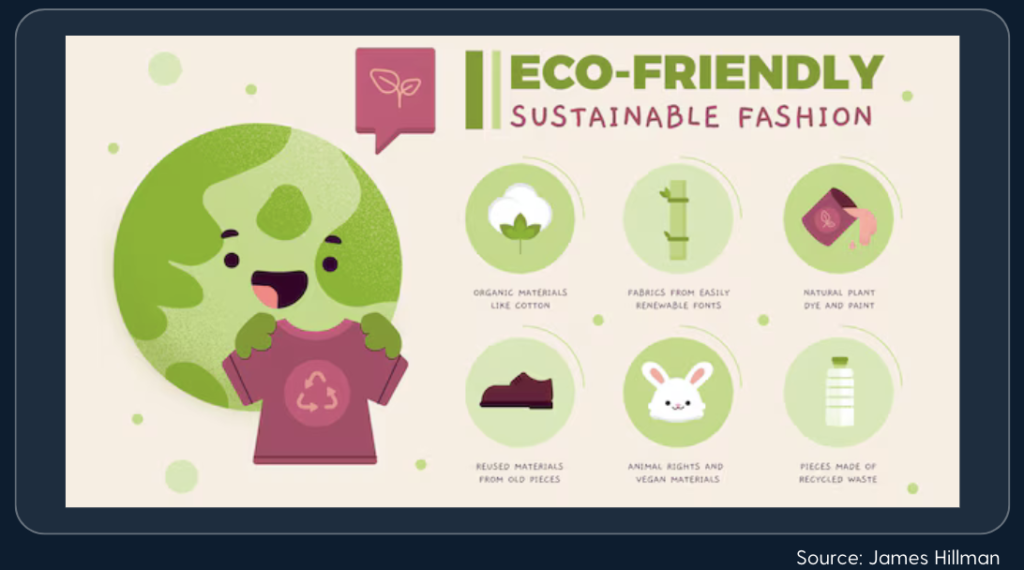
HOW CAN FASHION COMPANIES BECOME MORE ETHICAL?
1. Partner with a sustainable Consultant
Experts can help identify areas for improvement, like material sourcing and production methods.
2. Become a Certified B Corp
This rigorous certification ensures your business meets high social and environmental responsibility standards.
3. Embrace a Sustainable Model
Consider the circular economy or cradle-to-cradle models, which minimize environmental impact.
4. Focus on Sustainable Materials
Opt for eco-friendly materials like organic cotton, bamboo, or hemp to reduce your footprint.
5. Prioritize Fair Trade Practices
Ensure fair wages and safe working conditions for everyone in your supply chain through fair trade certification.
6. Leverage Technology
Utilize blockchain for product provenance tracking, guaranteeing ethical sourcing, and explore other ethical tracking tools.
How can we shop more sustainably?
Consumers play a key part in promoting ethical fashion. First and foremost, it is important to be aware of the issues involved in the fashion industry and the impact that our clothing choices have. Once we are aware of these issues, we can then make more informed choices about the clothes we buy.
When shopping for clothes, look for items that are made from sustainable materials and produced by brands that employ sustainable and ethical practices throughout their entire production process.
In addition, be sure to do your research before you buy anything. This means reading labels carefully, researching brands and retailers, and asking questions about where clothes are made and what materials are used. You can also support ethical fashion by shopping at local boutiques and thrift stores. These stores often carry sustainable and fair trade clothing brands, and they are a great way to reduce your environmental impact.
Sustainable vs. Ethical Fashion: Key Differences
Focus:
- Ethical: People – Fair treatment of workers throughout the supply chain.
- Sustainable: Planet – Minimizing environmental impact of production.
Key Considerations:
- Ethical: Fair wages, safe working conditions, responsible material sourcing (avoiding labor exploitation).
- Sustainable: Eco-friendly materials (organic cotton, recycled materials), reduced waste, lower carbon footprint (local production, carbon offsets).
Similarities:
- Both value longevity in clothing (reduces waste).
- Both strive for transparency (ethical: fair labor practices, sustainable: eco-friendly practices).
Cost:
- Ethical clothing often costs more due to fair wages.
- Sustainable clothing might be cheaper due to resource-efficient processes.
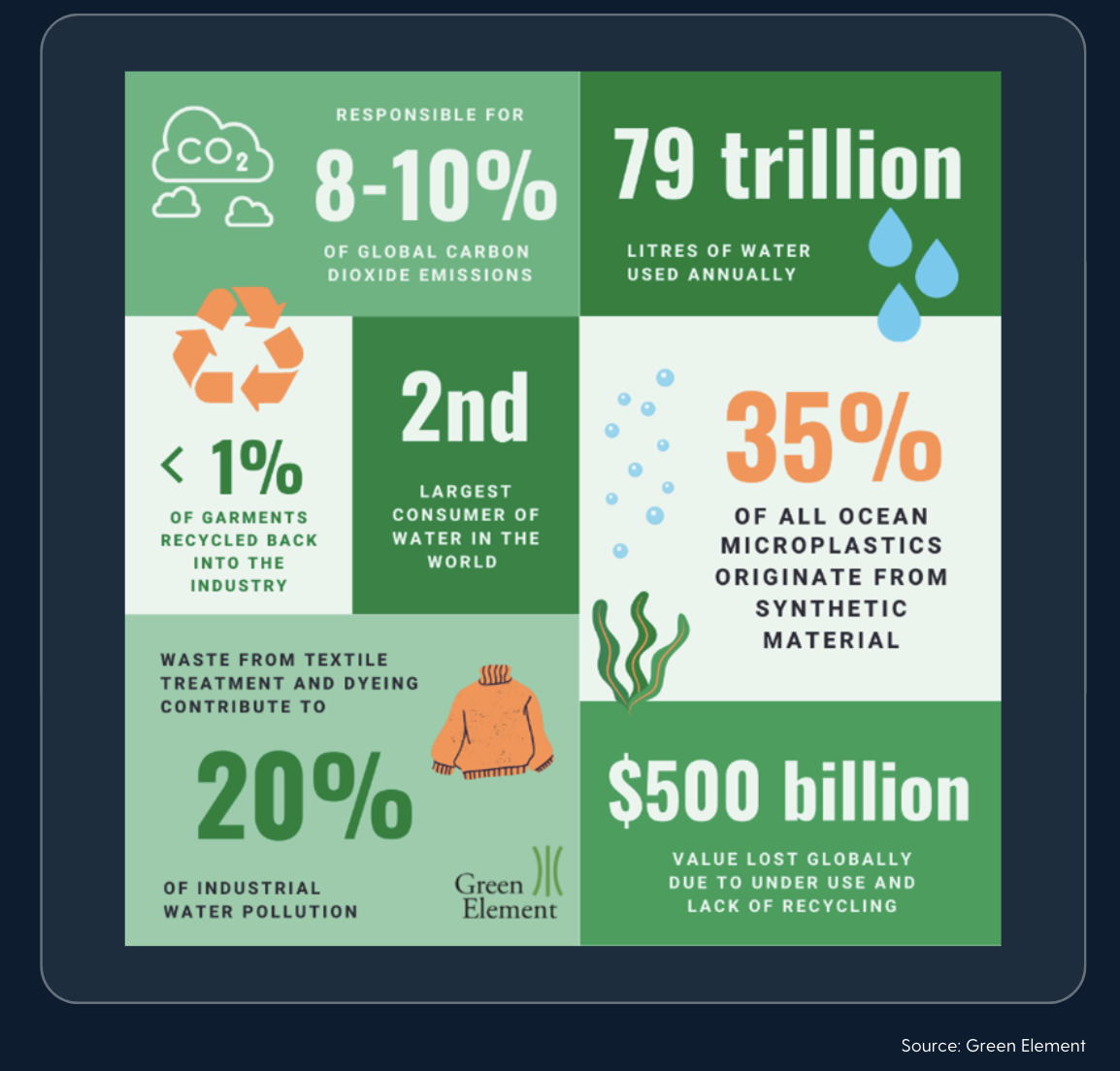
Why Is Sustainability Important In Fashion?
Issue #1: Human Rights Violations
Human Rights Violations in Fashion:
- Unlivable wages
- Child labor
- Modern slavery
- Migrant exploitation
- Gender discrimination (mainly affecting young women)
- Verbal, sexual, and physical abuse
- Forced overtime
- Hazardous work conditions
The Rana Plaza disaster in 2013, which claimed 1,135 lives, brought attention to these issues and sparked the Fashion Revolution. Violations occur throughout the supply chain, from raw material sourcing to garment manufacturing and post-production. This includes unfair labor practices, unsafe working conditions, and a lack of diversity and inclusion in the industry.
Issue #2: Water Waste & Water Pollution
Those chemicals don’t just disappear after production; they pollute our waters.
Bangladesh’s leather tanneries dump 22,000 cubic liters of toxic waste into the Buriganga River, the city’s main water supply.
Us wearers further pollute waterways with microplastics every time we wash synthetic fabrics. These travel to the ocean, where they get eaten by marine life, which in turn gets eaten by us—leading to microplastics turning up in human blood.
One way you can prevent this is by using the Guppy Friend microfiber catching laundry bag. Washing less frequently using a gentle cycle and cold water also helps.
Speaking of water, the fashion industry is its second-largest consumer, utilizing 6–9 trillion liters per year.
Again, we point the finger at the thirsty crop of conventional cotton, which has led to a 15% shrinkage of the Aral Sea in Central Asia.
To counter this, sustainable fashion approaches water usage as a resource to be reused rather than discarded. For instance, some semisynthetic fabric plasticizing and dyeing processes can be done in a “closed-loop” system by recycling solvents and water.
Issue #3: Greenwashing
In fashion, companies often market they’re doing something special to be “sustainable”, when really they’re barely adhering to basic human rights or environmental laws.
For example, in 2019, H&M launched a “green” line called “Conscious.”
The fast fashion giant said it used “organic” cotton and recycled polyester. Environmental watchdogs called BS for it being a mere marketing tactic to make themselves seem environmentally conscious without real action.
Sustainable brands often utilize third-party certifications and auditing schemes to provide assurances against these hollow claims.
However, it’s important to bear in mind these are no 100% guarantee either. Even gold-standard schemes (like B Corp) have seen their fair share of greenwashing accusations.
Issue #4: Complex Supply Chains & Lack Of Transparencys
Producing a single garment is complex, with many exchanges along the way. A typical seed-to-shelf supply chain includes:
- Sourcing materials and natural resources for every fabric involved (this includes farming techniques, soil, seeds)
- Raw material creation (i.e. spinning into fiber)
- Turning fiber into fabric
- Fabric dying and prepping
- Design
- Garment production (including components like thread, buttons, and zippers)
- Finishing touches (adding tags, pre-shrinking, etc.)
- Shipping to sellers across the world
- Shipping to buyers across the world
Tons of different hands and production bodies are involved. Plus, it typically changes for every season and garment, so brands aren’t always dealing with the same suppliers.
Even well-intentioned sustainable brands are likely complicit along their supply chain because it’s almost impossible to gain complete traceability of every step.
Buyer’s Guide: What Is A Sustainable Clothing Brand & How To Find One
Sustainable Materials:
- Focus on eco-friendly fabrics such as organic cotton, recycled materials, hemp, linen, and bamboo.
- Ensure certifications like Global Organic Textile Standard (GOTS) and OEKO-TEX for fabric authenticity and safety.
Supply Chain & Labor Practices:
- Prefer brands with smaller, controlled supply chains and transparency in sourcing and manufacturing.
- Look for certifications like B-Corporation, Fair Trade, and WRAP to ensure ethical labor practices.
Carbon Reduction & Commitments:
- Seek brands committed to reducing their carbon footprint and offsetting emissions through tangible actions.
- Verify evidence-based results and transparent carbon offsetting efforts.
Green Business Practices:
- Support brands that prioritize quality, durability, and end-of-life solutions such as repair, resale, or recycling programs.
- Look for sustainable packaging, resource management, and eco-friendly shipping practices.
Inclusivity & Diversity:
- Choose brands offering inclusive sizing, gender-neutral clothing, and promoting diversity in their imagery and model casting.
Community & Charitable Giving:
- Favor brands that allocate profits towards charitable initiatives and community betterment, ensuring genuine impact beyond profit margins.

tentree
Derrick Emsley (CEO and Co-Founder)
As a certified B Corp, tentree upholds the highest standards for both people and the environment throughout its manufacturing process. In fact, for every item purchased, the company plants an impressive 10 trees, with the ambitious target of one billion trees by 2030. With over 70 million trees already planted, their momentum continues unabated.
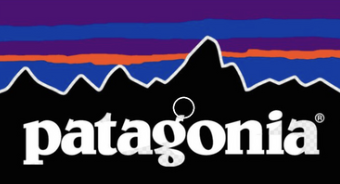
PATAGONIA
Ryan Gellert (CEO)
Patagonia is often hailed as one of the most sustainable companies on the planet – and for good reason. Patagonia offers a diverse range of premium clothing, including moisture-wicking tees and water-repellent hiking shorts, utilising 98% recycled materials and its transparent approach to addressing environmental concerns demonstrate its genuine concern for the planet’s wellbeing.

Eileen Fisher
Lisa Williams (CEO)
Eileen Fisher is synonymous with timeless elegance and sustainability. The brand champions organic fibers, like organic cotton and linen, and incorporates sustainable practices into its production processes. Their take-back program encourages customers to return old pieces, which are then upcycled into new creations.

PACT
Derrick Emsley (CEO and Co-Founder)
Pact specializes in essential organic cotton wear, from underwear to activewear. Their commitment to Fair Trade certification and supply chain transparency ensures eco-conscious consumers can enjoy comfortable, sustainable basics.
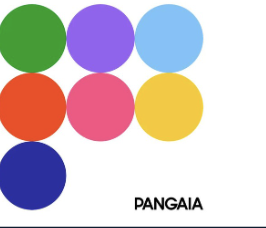
PANGAIA
Miroslava Duma (Founder)
PANGAIA considers itself a ‘materials science’ clothing company, focusing on developing sustainable fabrics and environmental initiatives.
The streetwear brand opts for simple, comfortable designs with a limited environmental impact. Some of the materials it’s developed include plant-based denim, made from hemp, and an alternative to feather down, made from flowers.
PANGAIA’s most recent initiative is called ‘Bee The Change,’ and it is launching its Trillion Bees initiative at COP28 this year. Bees pollinate most of the world’s food sources; however, colonies are collapsing due to various ecological factors.
conclusion
Sustainable fashion is a movement that encourages responsible and ethical practices within the fashion industry. By embracing eco-friendly materials, supporting ethical brands, and making conscious choices as consumers, we can contribute to a more sustainable future. The examples of sustainable fashion discussed, from organic cotton clothing to a fashion principles, provide a starting point for incorporating sustainability into our wardrobes. By collectively embracing sustainable fashion, we can make a significant impact on the environment, social justice, and our own personal fulfilment.
